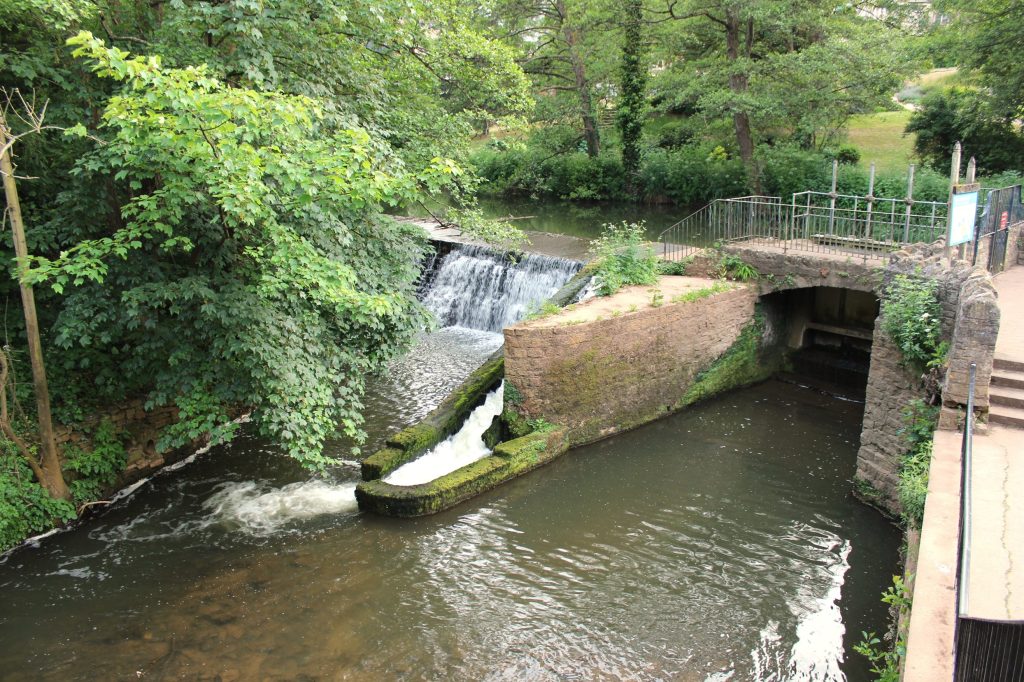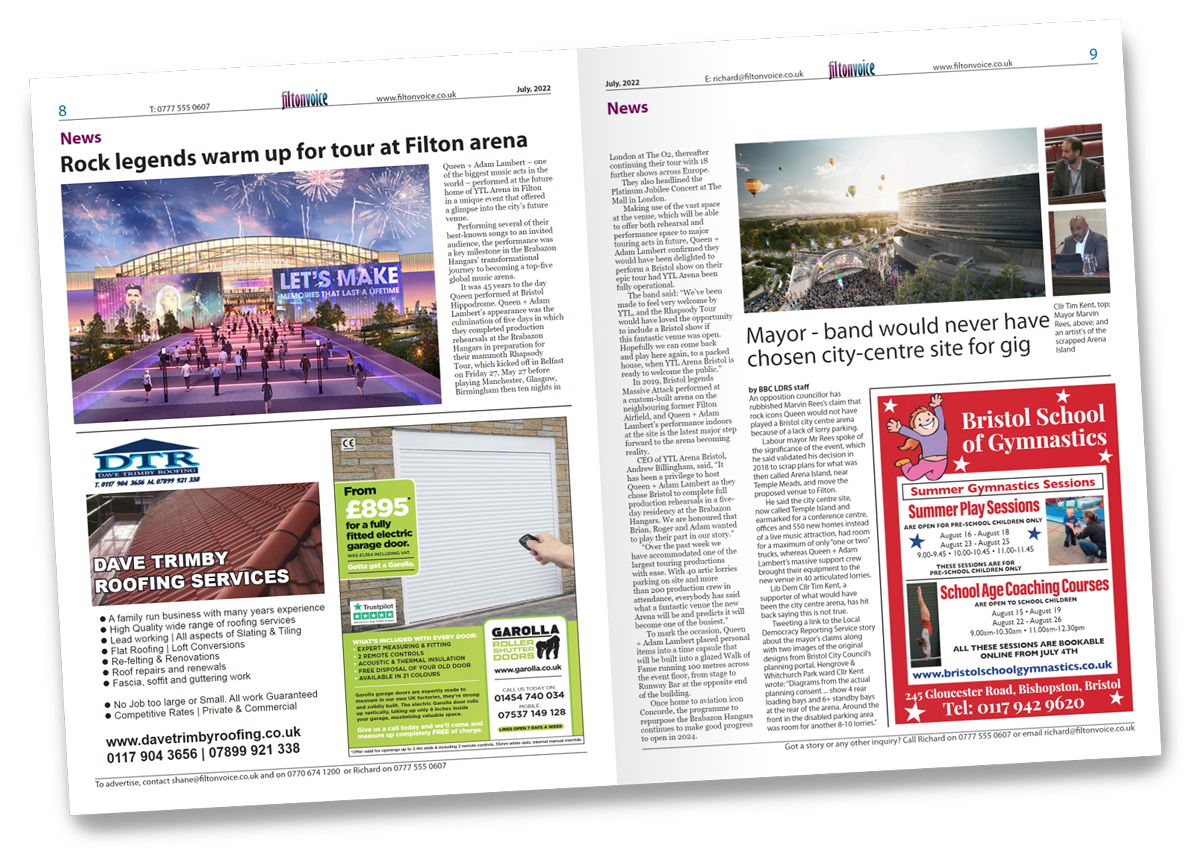A LIST of potential schemes to revitalise Keynsham town centre – which includes the pedestrianisation of the High Street – has been endorsed by Bath & North East Somerset Council.
Earlier this year, residents and businesses were invited to have their say on the ideas, which also included proposals to improve the Memorial Park.
Now an Keynsham Town Centre Regeneration Action Plan, which focuses on such themes as shopping, travel, arts and culture, has been developed in partnership with Keynsham Town Council following the public consultation, which attracted more than 400 responses.
The plan includes several projects, including:
*Identifying premises that could house a theatre or cinema, as well as creating a museum and art gallery.
*Creating a greener town centre, with more planting in the High Street, Temple Street and Ashton Way.
*Completing the Temple Street improvement project by sprucing up the east side of the street, improving Riverside Square, resurfacing the road, adding an extra pedestrian crossing, and replacing the parklets with permanent planters.
*Re-purposing vacant and underused units – this includes refurbishing two large ground-floor units on Temple Street, with occupancy planned from next month.
*Improving shop fronts by restoring and painting historic facades, and updating modern ones so they fit in with their older counterparts and “removing all detracting elements”.
*Enhancing the public space in front of St John’s Church and improving the upper High Street area, where pavements are narrow but busy.
*Transforming the train station into a hub for different transport modes as part of the Bristol to Bath corridor project. This includes improved cycle parking, better walking and wheeling routes between the station and town centre, and the new mobility hub proposed on the A4 corridor.
B&NES Council says ways of delivering these improvements have yet to be identified and funding has yet to be secured, but the aim is to prepare the town for a growing population under proposals for new housing over the next 15 to 20 years.
Regarding the High Street, the council says it has responded to feedback suggesting that it could be pedestrianised along the existing one-way section or along the whole length up to its junction with Station Road.
It says pedestrianisation is one of a number of options to be explored as part of a transport study of the High Street.
Any scheme will be subject to community engagement, it says, and it will work with disability advocates and traffic engineers among others to develop designs that meet high standards of safety and functionality.
B&NES Council has submitted an initial bid for funding to the West of England Mayoral Combined Authority (WECA) for the work, as part of efforts to improve walking, wheeling and cycling in the town, as well as improving bus journey times and reliability.
Regarding arts and culture, the action plan report states that although The Space, above the library, provides a community facility for live events, the town would benefit from larger venues for musical groups, choirs, acting groups and dance academies.
“There is a clear demand for theatre space of equal size and value of those of other towns,” it says, adding that Keynsham Town Council had identified the need for a 200-seat venue.
“A review of current community space and identification of additional spaces that will accommodate larger audiences should be undertaken to meet local needs,” the report says.
B&NES Council says its action plan was informed by the response to its public consultation. But although most respondents were in favour of pedestrianisation, for example, the council appears to be sticking to its proposals for the Memorial Park weir despite local opposition.
When suggestions that the weir be removed were revealed earlier this year, there was a backlash in the town and a flurry of critical letters in the pages of the Voice.
The action plan now states: “The weir is the most downstream barrier to fish passage in the River Chew catchment, and obstructs migratory fish such as Atlantic salmon, sea trout, sea lamprey, European eel, and resident coarse fish species from travelling up the watercourse.
“The weir stops water flowing naturally, creating a slow-moving section of river like a canal, which causes build-up of silt and loss of biodiversity. This has contributed to localised flooding along the riverbank in recent years.”
Although the new version of the action plan does not explicitly call for the weir’s removal, it does state that “the council, with other partners, is exploring options for the future of the weir to improve the river for wildlife, especially within Keynsham Memorial Park.”
This suggests that removal of the weir is still a possibility.
Other things people called for during the public consultation included a better variety of shops, cafes and restaurants in the town centre, pop-up shops in empty premises, less anti-social behaviour, improved parking and public toilets, banking facilities and hotel provision.
B&NES Council says: “These issues can be addressed in the project delivery phase, which will start at the end of 2025.”
The action plan has been endorsed in a single-member decision by Councillor Paul Roper, B&NES cabinet member for economic and cultural sustainable development, after also being endorsed by Keynsham Town Council in September.
Cllr Roper said: “The plan will help shape the town centre as we look to the future housing and employment growth that is on the horizon as part of the Local Plan. We will now work with Keynsham Town Council to develop the projects by planning how they will be delivered and applying for funding.”
Keynsham’s town clerk, Dawn Drury, said: “This is exciting news for Keynsham, local businesses and the community as a whole. The list of projects highlighted in the regeneration plan will enhance the town both aesthetically and practically with huge benefits for everyone.
“We are confident the improvements outlined in the plan will bolster Keynsham’s appeal to both residents and visitors and put Keynsham on the map as a destination for a wider variety of community and cultural events.”
The action plan has also been welcomed by local B&NES councillor George Leach.
He said: “As councillor for Keynsham North which covers Keynsham High Street, I’m delighted to see further support for Keynsham and the Liberal Democrat-run council supporting local business through improving shop fronts and repurposing vacant units.
“It’s key to support our High Street by ensuring throughfare and I think the potential of pedestrianisation is particularly exciting in that regard.”
Pictured above, a greener Temple Street with permanent planters is envisaged
Below, the weir in Keynsham Memorial Park



